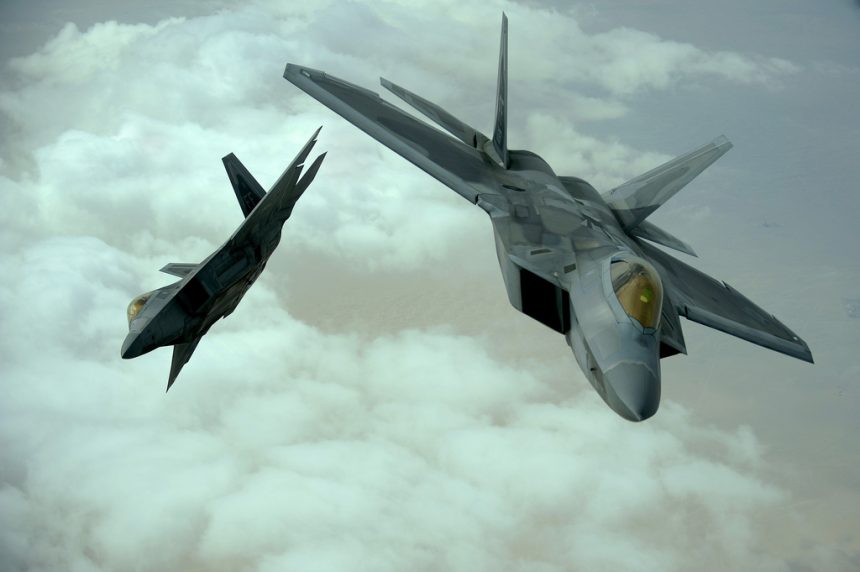Two Syrian Su-24 Fencer attempting to fly over a Kurdish-held area in northeastern Syria where U.S. SOF (Special Operations Forces) are operating, get intercepted by U.S. F-22 and encouraged to depart the airspace.
Twice in the last few days, Syrian jets performing air strikes close to where U.S. SOF are operating in northeastern Syria caused coalition aircraft to scramble.
On Aug. 18, U.S. jets were dispatched to intercept the Syrian attack planes that were attacking targets near Hasakah supporting regime forces fighting the Syrian Kurdish forces. About 300 U.S. military operate in the same area, training Kurdish forces who are fighting Daesh.
Syrian pilots did not respond to the radio calls of the Kurdish on the general emergency frequency nor did they acknowledge calls attempted by the coalition on the air safety channel used for communication with the Russian aircraft operating over Syria.
Anyway, by the time U.S. fighters reached the area, the Syrian planes had already left.
Following the first “close encounter” the Pentagon warned Assad regime to not fly or conduct raids in the area where the American SOF are operating. However, on Aug. 19, two Su-24 Fencers, attempted again to penetrate the airspace near Hasakah.
This time, the two Syrian Arab Air Force attack planes were met by American F-22 Raptors (most probably already operating in the same area providing Combat Air Patrol).
As reported by ABC, a U.S. official said the presence of American F-22 aircraft “encouraged the Syrian aircraft to depart the airspace without further incident. No weapons were fired by the coalition fighters.”
This is not the first time the F-22 presence deters foreign military aircraft from harassing U.S. forces.
In March 2013, few months after two Sukhoi Su-25 attack planes operated by the Pasdaran (informal name of the IRGC – the Army of the Guardians of the Islamic Revolution) attempted to shoot down an American MQ-1 flying a routine surveillance flight in international airspace the Pentagon decided to escort the drones involved in ISR (intelligence surveillance reconnaissance) with fighter aircraft, including the Raptors.
In one very well-known episode, F-22 stealth jets providing HVAAE (High Value Air Asset Escort) to a U.S. Predator flew under the Iranian F-4E Phantoms that had intercepted the drone then pulled up on their left wing and then called them and radioed a famous “you really ought to go home” that allegedly scared the Iranian pilots off saving the drone.
Image credit: U.S. Air Force
















